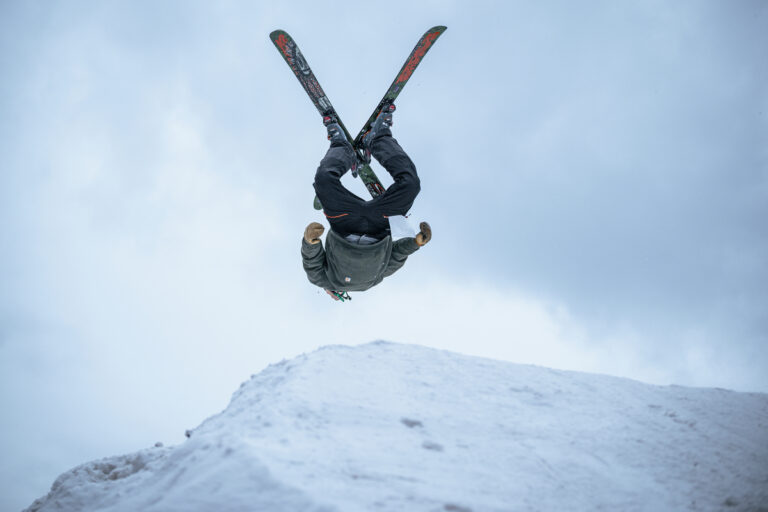Mile 34. My feet ache, burn, and swell with painful blisters. Each step has become a burden, and our pace has slowed to just over one mile per hour on the downhill. It’s 11:30 p.m. and we have 10 more miles to go. I curse my optimism (wearing brand new boots will be fine, I told myself) and accept the consequences—an unplanned night out. We throw down our sleeping bags beside the hitchrails at the lower Olympus Guard Station and enjoy the horizontal position after an 18-hour day. Fortunately, despite the mosquitos and piles of dried manure around us, sleep sets in quickly.
The alarm sounds at 5 a.m. the next morning, and I’m more mentally prepared to finish the sufferfest. I count our blessings: the wet socks dried inside my shirt overnight; it did not rain. The last of the almond butter slathered over the last of the Lara bars, plus the last 10 Sour Patch Kids, serve as breakfast. I rummage through the first aid kid and tape large, gauzy pillows to the back up my heels and inside of my arches before sliding my battered pups into the crispy socks and damp boots. We continue the oozy-foot shuffle to the Hoh River trailhead, moving a good bit faster than the night before, dreaming of hot ramen and cold beers.
Looking back on every backcountry adventure, I realize the excitement of these trips originates from all that could go wrong—weather, navigation, a multitude of human errors—and one’s ability to adapt and persevere when (not if) they do. In some ways, the same is true in many sports. After watching highlight reels from this year’s Tour de France, I realized the severe curves and sprint finales are so exciting because someone might wreck. We sit on the edge of our seats during Olympic races, even if there is a clear favorite, because a hamstring might pop or an athlete might tumble. Even in tightly-controlled conditions, the unexpected can change everything
But the stakes of backcountry pursuits are much higher because of their remoteness. Sprain an ankle running around the local high school track, and you can call a friend or summon a Lyft home. Sprain your ankle in the Glacier Peak Wilderness, and you’ve got to draw on some grit (and hopefully a good pair of trekking poles) as you crutch your way out. That the risk is greater in the remote and wild parts of our country does not mean we shouldn’t visit those places; but it does mean that preparedness, training, and experience are mandatory parts of any backcountry endeavor. In the August 2019 issue of OTO, Jean Arthur describes how backcountry citizen scientists are providing data that help researchers track and understand climate change; Ana Maria Spagna reflects on her partner’s obsession with foraging and adopting native plants from remote areas; and Allison Roskelley shares a beautiful portrait of her husband’s love of fishing and mountains in “The Rope and the Line.” They all touch on how these pursuits add meaning and depth to our lives, and how we’re better for the lessons we learn out there in the backcountry—even if those lessons come at great physical discomfort or personal cost.













